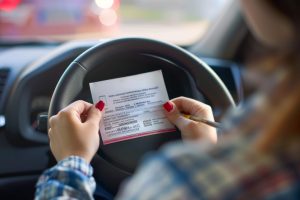Ontario’s licensing system has different categories of driving licenses for different vehicles, like cars, trucks, and motorcycles. Each driver license classe and type has its own requirements, skills, and responsibilities. This guide will break down the difference between M And G class licenses, making it easier for you to pick the right license for your driving needs.
Why Ontario Has Different Driver’s Licenses
Ontario has different categories of driving licenses to improve road safety and ensure drivers have the right skills for various vehicles. Each license class is for specific vehicles and responsibilities—for example, Class G is for regular vehicles like cars and small trucks, and Class M is for motorcycles.
This system helps drivers gain the skills needed to handle different vehicles safely, reducing risks from inexperience. The graduated licensing system for both Class G and Class M adds to safety by letting new drivers slowly move through stages with more responsibility and fewer restrictions as they gain experience.
Overview of the Types of Driver’s License in Ontario
There are different types of licenses in Ontario. The Class G license is the usual license for driving cars, vans, and small trucks up to 11,000 kg. It has a three-step process: G1 (learner’s permit with supervision), G2 (intermediate with some limits), and the full G license, which allows complete driving freedom.
The Class M license is for motorcycles and similar vehicles. It also has steps: M1 (beginner with limits like no night riding), M2 (intermediate with fewer limits), and the full M license, which gives full motorcycle access.
What is an M Class License?
In Ontario, an M Class License lets people aged 16 and older legally ride motorcycles. It uses a graduated system to focus on safety. First, you take vision and written tests to get an M1 license. With an M1, you can only ride during daylight hours, must have zero blood-alcohol level, and can’t carry passengers or ride on highways with speed limits over 80 km/h.
After passing a road test, you can upgrade to an M2 license, which allows nighttime riding and access to all roads but still requires a helmet and zero alcohol tolerance. After 22 months (or 18 months with a safety course), riders can take a final test to get a full M license, which removes most limits. The M license also includes special conditions, like M with L for limited-speed motorcycles and M with M for three-wheeled vehicles.
What is a G Class License?
The Ontario G Class License is the basic license for driving cars, vans, and light trucks up to 11,000 kg. Getting it involves a step-by-step process. First, you get a G1 license by passing a vision and knowledge test. With a G1, you can only drive during the day with supervision and can’t drive on highways.
After 8-12 months, you can move up to the G2 license, which lets you drive alone but requires zero alcohol in your system and has nighttime passenger limits for drivers under 20. Finally, after one more year, you can get the full G license, which gives you full driving freedom and removes most restrictions.
Key Differences Between M and G Class Licenses
The main differences between M and G Class Licenses are based on the vehicles each license covers, the testing needed, and specific restrictions.
| Feature | G Class License | M Class License |
|---|---|---|
| Vehicle Eligibility | Cars, vans, light trucks (up to 11,000 kg) | Motorcycles, mopeds (M-L), three-wheeled motorcycles (M-M) |
| Testing & Age Requirements | Minimum age of 16; G1-G2-G testing for standard vehicle skills | Minimum age of 16; M1-M2-M testing for motorcycle skills |
| Restrictions & Limitations | G1: Supervised only, no highway; G2: No alcohol, night restrictions for drivers under 20 | M1: Daytime only, no passengers, no high-speed roads; M2: No alcohol, full road access |
| Training & Practice | Optional driver training to improve skills and fast-track G2 | Recommended or required motorcycle safety courses, which can speed up licensing |
Other Driver License Classes in Ontario
There are other driver license classes in Ontario appropriate for large vehicles. Commercial licenses cover different types of vehicles. Class A is for tractor-trailers. Class D is for trucks over 11,000 kg. Classes B and E are for school buses, with Class B for large buses and Class E for small ones. Class C allows drivers to drive large buses, and Class F is for smaller buses and ambulances.
Final Words
Knowing the difference between M And G class licenses in Ontario helps you meet the legal and safety standards for your vehicle. Whether you drive a regular car, a commercial truck, or a motorcycle, each class has tests, restrictions, and training to keep you safe and confident on the road. For both new and experienced drivers, following these rules protects you and makes the roads safer for everyone.
Enjoy driving, and drive safely!
FAQs
Can you hold both an M and G Class license simultaneously?
Yes, it’s possible to hold both an M and G Class license. Many drivers hold dual licenses to operate both motorcycles (M Class) and regular vehicles (G Class).
What are the main steps to transition from a G Class to an M Class license?
You’ll need to pass the M1 written knowledge test and a vision test to start the M Class graduated system. This includes an M1 level with restrictions, progressing to M2 after a road test, and finally achieving the full M license after additional practice and testing.
Do M Class license holders have higher insurance costs than G Class holders?
Typically, insurance for motorcycles under an M Class license is higher due to the greater risk associated with riding motorcycles. However, rates depend on factors like the type of motorcycle, the driver’s history, and coverage options.
Is an M Class license valid for operating regular vehicles like cars?
No, an M Class license alone doesn’t permit driving cars or other G Class vehicles. For this, drivers need a G Class license or higher.
What is the renewal process for M and G Class licenses, and how often is it required?
Both M and G Class licenses must be renewed every five years. Drivers will receive a renewal notice from the Ministry of Transportation (MTO) outlining fees and any specific requirements based on their age and health.
Are there unique fines or penalties specific to M or G Class licenses?
Yes, M Class riders face penalties for helmet and equipment violations, while G Class drivers can face penalties related to passenger limits or curfews at the G1 and G2 levels. All drivers are subject to Ontario’s demerit point system and other traffic law violations.





